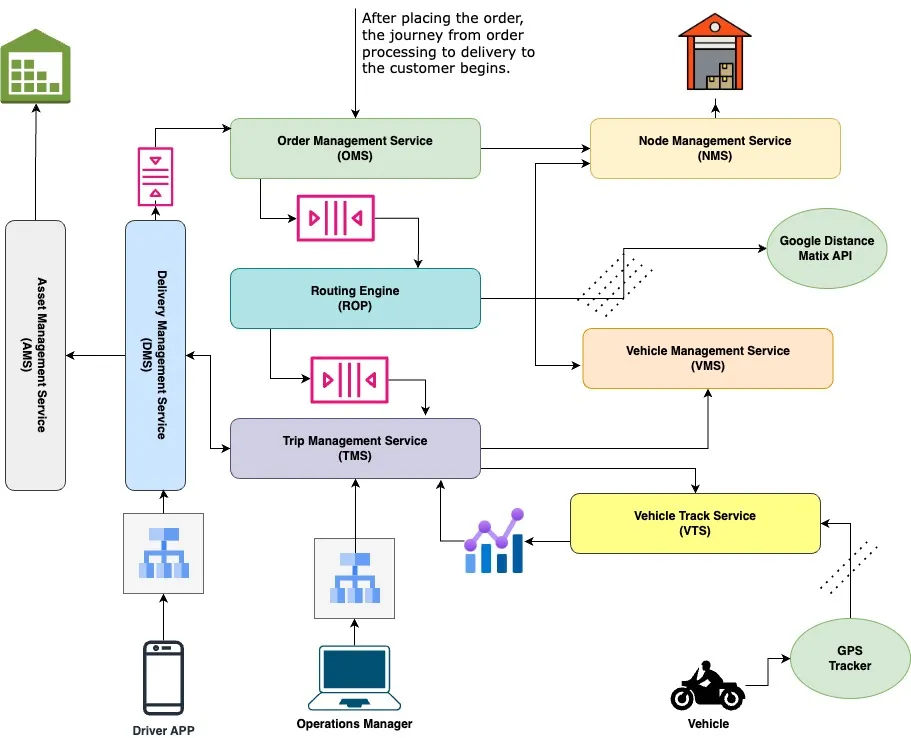🚀📦 Journey: From Placing Your Order to its Delivery! 🚚✨
 Manish Kumar Paneri
Manish Kumar Paneri
📦 Order Management Service (OMS):
This service helps manage order status such as placed, shipped, in transit, delivered etc. The service creates batches, segregates them based on geo-location zones and timeslots, and then assign nodes to serve the orders. These batches are then pushed to the route engine source queue.
🏢 Node Management Service (NMS):
It manages node details, locations, and the maximum capacity to fulfil orders. Nodes represent warehouses and hubs, acting as delivery points to fulfil orders based on geo-location zones.
🛣️ Routing Engine (Route Optimization Planning):
This service finds the shortest path between delivery points and helps optimize routes for delivering orders based on timeslots, volume & weight, and node capacity. NMS checks node details, ensuring they can fulfil orders, considering latitude/longitude. It also considers order volume & weight to determine the number of vehicles needed to serve orders using the VMS API. Google Distance Matrix API fetches distances between each order to identify the shortest path for order delivery. Trips are then created based on all conditions to fulfil orders and are pushed to the TMS source queue.
🚗 Vehicle Management Service (VMS):
It manages whether a vehicle is occupied or unoccupied. It handles the capacity of each vehicle based on volume & weight.
🚦 Trip Management Service (TMS):
TMS manages trips, displaying to the Operations team the number of orders associated with each trip, the occupied vehicle, and trip status statistics such as load, start, in-process, completed, and unload.
🚚 Delivery Management Service (DMS):
Whenever a trip is created, the DMS assigns the driver and manages trip statistics. When the driver reaches the node, the driver marks the vehicle as loaded. After that, when the driver starts the trip, it is marked as started using the driver app.
👜 Asset Management Service (AMS):
This service manages the assets required by the delivery person to carry orders, such as big bags or totes. These assets are treated similarly to items managed in inventory systems and are essential for the delivery process.
📍Vehicle Track Service (VTS):
This service assists the company or operations team in monitoring driver activity based on vehicle stoppages and tracking whether drivers are following the routes.
Our end-to-end system ensures a streamlined and efficient order fulfilment process, optimizing resources for an unparalleled customer experience.
💼🌐 #Logistics #OrderFulfillment #SupplyChainExcellence
Subscribe to my newsletter
Read articles from Manish Kumar Paneri directly inside your inbox. Subscribe to the newsletter, and don't miss out.
Written by
